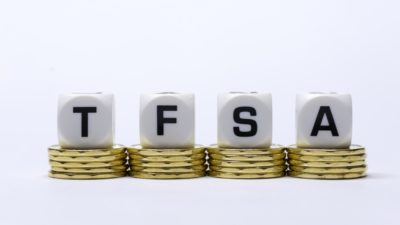Dollarama Inc. (TSX:DOL) hit a 52-week high June 7 after delivering strong first-quarter earnings. On a bit of run up 31.4% year to date, it’s on pace for its eighth consecutive year of positive annual returns, making it in rare company.
As part of its good news announcement, Dollarama announced a renewal of its normal course issuer bid that allows it to buy back up to 5%, or 5.7 million of its shares outstanding.
Not only is Dollarama stock trading within 4% of its 52-week high, but it’s also trading within 4% of its all-time high since going public on October 9, 2009, at $17.50 a share.
If you’d bought 1,000 shares of Dollarama in the IPO and are still holding, today you’d have $128,211 — a paper profit of $110,711, and an annual return just shy of 30%.
It’s impossible not to marvel at the success of Dollarama, one of the few examples of a private-equity-sponsored IPO that didn’t turn the company into a real basket case. That’s due in large part to the excellent management team led by Neil Rossy and his father Larry. Without them, I doubt we’d be having this conversation.
Why buy back stock?
Since hitting a peak number of shares outstanding in fiscal 2011 (150.9 million), Dollarama began repurchasing its shares. As of the end of the first quarter, there were 115.7 million outstanding, or 23.3% less.
Without doing anything else to improve its business, Dollarama’s earnings per share increased by 30%, or 3.4% annually. Given that earnings drive stock prices, it’s a very persuasive argument why regular buybacks are a good thing at almost any cost.
Free cash flow matters
However, free cash flow, the cash generated beyond the ongoing needs of the business, isn’t an endless amount. There’s only so much to go around.
When it comes to returning capital to shareholders, Dollarama has three choices: share repurchases, dividends, and debt repayment.
In its trailing 12 months, Dollarama generated $414 million in free cash flow. From that, it repurchased $764 million in stock and paid out $11 million in dividends for a free cash flow deficit of $361 million.
That explains why its long-term debt outstanding has increased by $108.5 million, but even that doesn’t cover the shortfall.
Dollarama finished Q1 2017 with just $54.4 million in cash, or $0.47 per share. That means it’s trading at 272 times cash. By comparison, Canadian Tire Corporation Limited sells for 18 times cash.
Bottom line on buybacks
Dollarama bought back just under six million of its shares in the past year at an average price of $100.78 per share. Based on its current share price, it has gotten a 28% return on its money over the 12 months — a very reasonable return.
The downside is, the $602.2 million it used to repurchase those shares could have gone to significantly reducing its debt.
God help them if Canadians ever stop being cheap.
Dollarama’s stock hasn’t had a bad year since its IPO. Combine that with the fact the bull market is due to at least correct itself in the next 12-18 months, and it seems the better move for rewarding shareholders is to increase the quarterly dividend to $0.25 or perhaps more. Even at $2 per share, the dividend will cost Dollarama about $200 million less in annual payouts.
I get that you don’t have to buy back the shares, whereas dividends become expected, but with its stock getting pretty rich, there are better ways, in my opinion, to reward shareholders.







